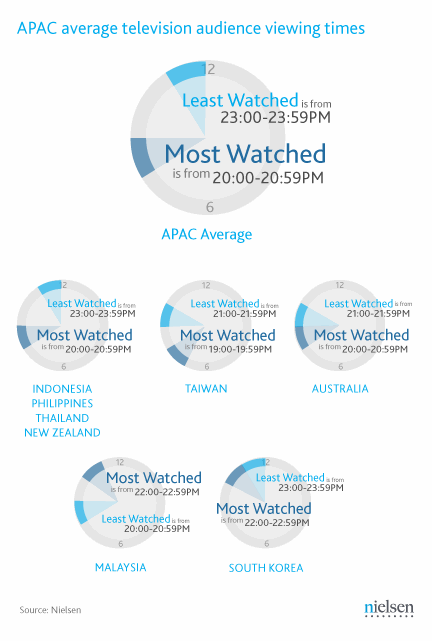For the majority of countries in Asia Pacific, official primetime television starts at 6pm and finishes at 11pm*. Taking a closer look at viewing habits around the Asia Pacific region, however, the time slot when the bulk of viewers tune in is between 8pm and 9pm, when close to one third of the Asia Pacific# population (32%) is watching television. The first hour of primetime, from 6pm to 7pm, garners the fewest number of viewers, with only around one in five (21%) watching television at that time.

Country by country, peak viewing times vary somewhat:
- South Korea has the latest viewing peak, with the highest proportion of viewers (26%) tuning in between 10pm and 11pm
- New Zealand and Australia have the highest proportion of viewers tuning in at any particular time – on average, 40 percent of New Zealanders and Australians watch television between the hours of 8pm and 9pm, closely followed by the Philippines with 39 percent
- New Zealand has the highest number of viewers outside of the 8pm to 9pm peak time – between 7pm and 8pm 39 percent of New Zealanders tune in to their televisions and the 6pm to 7pm time slot also enjoys around 35 percent of New Zealand viewers
- Malaysia has the largest proportion of late night viewers, with one quarter of Malaysians still watching television between the hours of 11pm and midnight
- Filipinos are the most likely to tune in to daytime television – more than one in five (22%) watch television between 12pm and 2pm.



